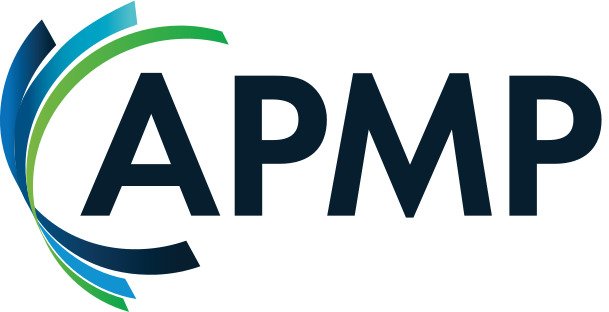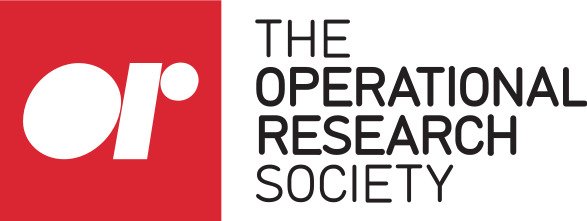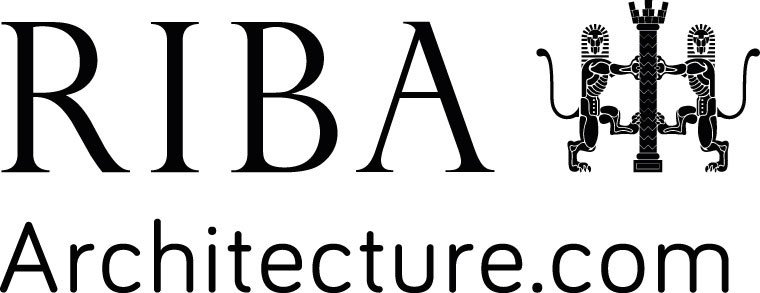
Change Management
Successful bidders demonstrate how they:
Automate change control and approvals by implementing a 5-stage change control process (initiation, assessment, analysis, implementation, and closure), developed in guidance with ISO 10020 and ACMP’s Standard for Change Management.
Make their change control process a binding contractual requirement and contain it within Project Execution Plans (PEPs).
Collate individual change forms into a change control register, helping Project Managers to effectively monitor and control changes within schedule and budget.
Establish guide rules to assist with change classification e.g., scope change, discovery item, or design development.
Review alternative options, the impacts of a decision delay, and the cost to process the change when during change approval.
Consider the cost programme and operational implications before verifying changes.
Gain consensus for change amongst key stakeholders and staff, maximising their involvement and support whilst minimising conflict and any damage to morale.
Develop a powerful business case for each change that clearly depicts the real value of the change company-wide.
Test and phase change implementation to ensure changes are safe, deliver expect benefits, and avoid unexpected issues.
Empower action and solutioning in measurable, realistic steps, ensuring change is planned and continually reviewed.
Implement a post-change evaluation process, analysing the impact of changes vs. anticipated results.
Adopt John Kotter’s 8-Step Change Model, which helps to ensure the right changes in behaviours and attitudes.

Collaborative Working
Successful bidders demonstrate how they:
Establish a joint relationship management plan (JRMP) with other contractors and their supply chain, defining collaborative working practices and behaviours.
Consider the benefits of Early Contractor Involvement (ECI) on a project-by-project basis, advising clients on appropriate procurement strategies.
Are a signatory of the RICS Conflict Avoidance Pledge, serving as a testament to conflict avoidance and early intervention.
Use knowledge management systems such as Guru, Document360, and SharePoint to aid information sharing.
Use project collaboration tools e.g., 4Projects, Sypro, CEMAR, Aconex, and Conject to manage information and correspondence flow between various parties.
Adopt a collaborative approach to soft landings by appointing a soft landing’s champion and coordinator.
These questions enable bidders to present their:
ISO 44001 accredited Collaborative Business Relationship Management System, which has contributed to their receipt of collaboration awards issued by the likes of Constructing Excellence, CIHT, BCIA, and CIBSE.
Use Responsible, Accountable, Consult, and Inform (RACI) matrices to ensure clear understanding of roles and responsibilities.
Strategy to collaborative working by establishing joint objectives, risk management structures and exit strategies with clients/contractors.
Communication, engagement and reporting methods e.g., stakeholder workshops, focus groups, and progress reports.
Integrated use of BIM (mock-ups, simulations, and reviews), with features such as clash detection and digital twins helping to improve collaboration, avoid rework, streamline workflows, reduce risk, and generate efficiencies.

Digital Delivery and Management
Successful bidders demonstrate how they:
Use innovative carbon and whole-life cost modelling software such as OneClick LCA, to automate building lifecycle cost calculations and reduce the environmental impacts of assets.
Employ asset data management/tracking software, such as Asset Panda, to capture data, manage costs, and report in real-time across complex portfolios.
Use digital surveying tools, such as laser scanning and drones/UAVs, to capture site and asset data for project scoping and planning e.g., ortho imagery, point clouds, and 3D interactive models.
Quickly and effectively tailor survey templates to client requirements, which are pre-loaded with asset data extracted from CAD drawings.
Implement BIM-enabled processes e.g., clash detection, quantity takeoff, 4D scheduling, and construction sequencing.
Develop BIM Execution Plans in guidance with ISO 19650 and coordinated BIM models, defining data requirements for handover e.g., required level of detail (LOD) and information (LOI) for each asset.
Use AI for schematic planning e.g., Finch, for generating floor plans; for urban development e.g., Autodesk Forma; and for determining a project’s commercial viability during early planning e.g., Parafin.
Use automated building performance design tools such as Cove.tool, which uses machine learning to analyse and identify how building performance e.g., energy consumption and daylighting levels can be improved.
Use virtual reality, augmented reality, and touchable holograms to improve stakeholder engagement, providing immersive 3D walkthroughs of the building/asset. Data-rich digital mock-ups provide stakeholders with a clearer construction context, improving decision making.

Environmental Sustainability
Successful bidders demonstrate how they:
Operate under their ISO 14001:2015 environmental management system.
Develop carbon reduction plans in alignment with PPN 06/21 and report scope 1-3 carbon emissions.
Engage with the likes of the UK Green Building Council (UK GBC) and London Energy Transformation Initiative to drive best industry practice.
Are members of accredited programmes such as RE100, ensuring 100% of all electricity used in projects comes from sustainable energy sources.
Offset any outstanding emissions using PAS 2060-compliant certified carbon offsets.
Support the Waste and Resources Action Programme (WRAP) by producing innovative solutions and tools to minimise waste.
Use ISO 20400 as guidance on integrating sustainability within procurement and procuring locally, with emphasis on suppliers’ environmental performance.
Run their offices on sustainable energy tariffs/sources e.g., ground-source heat pumps, and implement an EV salary sacrifice scheme.
Using ISO 14031:2021 to assess environmental performance against capital, replacement, operation, maintenance, and end-of-life (CROME) lifecycle considerations.
Promote sustainability throughout their supply chain e.g., use of FSC-certified timber and BES6001 concrete and aggregates.
Conduct detailed modelling of assets with CIBSE TM54 and analyse future climate impacts using CIBSE TM59.
Promote circular economy by designing for deconstruction and designing out waste, assisted through the collection of asset data.

Mobilisation, Handover and Completion
Successful bidders demonstrate how they:
Establish mobilisation responsibilities and accountabilities and treat mobilisation as a standalone project, with a separate programme, dedicated resource and focussed management.
Develop and execute their mobilisation plan, in which lean, goal-driven project management teams are established; staff training is reviewed to ensure necessary competency; and stakeholders are actively engaged.
Produce a transition plan, featuring transition timelines, sponsors, communications, site inductions, onboarding resources, review of project status, and TUPE (if appropriate).
Develop project handover plans, defining a comprehensive approach to the creation, management, use and exchange of all information related to project execution.
Support and inform the close-out of projects during project completion and handover, update the project information pack with cost and schedule outturns for their clients, and carry out LFE reviews.
Oversee the operator close-out plan and se Government Soft Landings to achieve early end-user engagement in the design and construction process, improving project handover and aligning design and construction with operation and asset management.
Assist clients in obtaining statutory and other licences required to use their assets, and hold aftercare review meetings post-handover, to ensure the asset is performing to plan.
Conduct thorough Post-Occupancy Evaluations (POEs) to inform their clients about the effectiveness of project delivery, including project handover and improving the client’s assessment of the asset’s in-use performance.

Performance Management and Reporting
Successful bidders demonstrate how they:
Establish a suite of qualitative/quantitative KPIs/SLAs to measure performance, which are managed via performance dashboards, giving decision makers access to real-time performance vs. KPIs/SLAs.
Use monthly performance summary reports to highlight performance against plan, detailing any aspects that have exceeded agreed bounds or are forecasted to potentially breach. Key findings, trends, and opportunities for continual improvement are identified.
Produce executive summary reports that communicate trend analysis, red-flag warnings, and key opportunities/issues to clients and senior management.
Produce a cost plan dashboard report, tracking the movement of the cost plan across various iterations and providing communication on the status of forecasted project costs.
Use Carlos Fallon’s Combinex Method to arrive at a single ‘value index’ for projects, which represents how well the project is performing against weighted value drivers.
Produce target value design reports that summarise individual progress across systems against the target value design parameters. These also identify potential alternative design options or construction methods, to achieve further client benefits e.g., cost savings or a reduction in embodied carbon.
Establish site-wide early warning groups, which enable stakeholders to proactively identify and address potential issues, risks, and challenges that may arise during projects.
Use planning techniques such as windows analysis, “as planned vs. as built”, and “impacted as planned” to help identify the causes and effects of project delays, variations, and deviations.
Apply lessons learnt from previous projects and hold a lessons learnt workshop post-handover, involving all stakeholders, to identify what went well and areas for improvement.

Quality
Successful bidders demonstrate how they:
Establish a clear governance structure for quality e.g., a Quality Committee, elect an internal design champion, and recruit a RIBA Client Design Adviser, to provide expert advice and help protect the client’s interests.
Foster a positive quality culture by implementing a Quality Management Plan, produced in guidance with ISO 10005:2018, that adopts a proactive vs. reactive approach.
Empower staff to speak out about any sub-standard work and reward staff who showcase exceptional performances in their quality of workmanship.
Develop and implement method statements that are fully compliant with ISO 9000 quality standards and reflective of best industry practice.
Effectively manage and satisfactorily resolve complaints in alignment with ISO 10002:2018.
These questions enable bidders to present their:
ISO 9001:2015 accredited quality management system, which ensures consistently high quality standards that meet client, statutory, and regulatory requirements.
Quality awards, such as those issued by CQI, ICWCI, and NHBC.
Approach to maintaining high quality standards via routine monitoring, measurement, inspection, and role-specific workforce training.
Approach to minimising design defects e.g., through comprehensive design reviews with externally recruited professionals, so designers can identify, understand, and consolidate the reasoning behind any defect, first-hand.
Report on the quality of work via workshops on quality, monthly quality meetings, and findings from quality audits. Performance is benchmarked against industry averages, KPIs, and SLAs to continually drive quality standards upward.

Risk
Successful bidders demonstrate how they:
Develop an organisational structure for risk responsibility and accountability, including elected Risk Champions, Risk Committees, and Risk Steering Groups.
Conduct comprehensive risk assessments, joint risk analysis with other contractors, and quantitative cost/schedule risk analysis (QCRA/QSRA).
Equitably distribute risk between project stakeholders, wherever possible, in guidance with best practice published by the likes of the FIDIC. Such risks include quantities, unforeseen ground conditions, and force majeure.
Use 3-point estimating and Monte Carlo simulations to model the impact of risk and uncertainty, informing risk contingency within the cost plan.
Employ risk management software e.g., nTask, Resolver, and TimeCamp to provide clear overview of risk management.
Implement a risk-based contingency allocation method, whereby risks are defined with specific costs as opposed to apply notional contingency percentages.
Adopt a phased approach to risk control, assessment, and mitigation in guidance with ISO 31000:2018 and IEC 31010:2019.
Adopt the results of specific risk analyses and cross-check with reference class forecasting, encouraging risk interrogation and mitigation whilst reducing the need for contingency funding.
Create detailed project risk profiles to identify and quantify risk and mitigations, and effectively manage risk through a 6-step process: plan, identify, assess, respond, review, and report.
Undertake functional area benchmarking to help identify potential gaps and consider realistic estimated allowances.
Produce a risk dependency matrix or a network diagram to map identified risk dependencies, improving their understanding of how risks interact, enabling them to better manage risk.

Social Value
Successful bidders demonstrate how they:
Effectively implement their social value policy on projects, using ISO 26000 as a framework.
Hold social value planning workshops early in projects with local communities, to co-create objectives and action plans with residents and agree clear and tangible tools for measurement.
Embrace the social value outcomes outlined in PPN 06/20.
Deliver work-based learning and conduct talks to local schools and colleges, inspiring the next generation into their industry.
Establish a social value committee, who meet monthly to monitor social value progress in projects.
Hold supply chain ‘meet the buyer’ events to identify new, local suppliers, supporting local economic growth.
Use tools such as The Social Value Portal’s National TOMs, to quantifiably measure their social value commitments.
Are signatories to a number of employment charters, such as Ban The Box, The 5% Club, and Disability Confident, and are recognised as a Top 100 Apprentice Employer.
Embed economic and sustainable procurement practices within their operations e.g., adopting the Fair Payment Charter.
Are committed to the World Green Building Council Net Zero Carbon Buildings Commitment.
Work with local councils to develop Minority Improvement Plans, to widen access to employment opportunities among underrepresented groups within their workforce.
Use data from the Indices of Deprivation, NOMIS, and ONS to target career development of students in schools in underrepresented and poor social mobility areas.
Develop social value impact reports, produced by designing and applying indicator frameworks, impact maps, and outcome-monitoring systems.

Value for Money
Successful bidders demonstrate how they:
Conduct value engineering workshops and affordability reviews to assess the cost effectiveness of solutions, often by project value profiles and function cost analysis.
Interrogate and challenge asset strategies to ensure what is identified is actually needed.
Develop detailed value engineering schedules with actions for implementation.
Conduct whole-life cost appraisals in line with ISO 15686-5:2017 and guidance from BCIS and OGC, using lifecycle and FM models tailored to each stage of the procurement process.
Undertake soft market testing to ensure costs proposed by contractors are reasonable.
Evaluate cost-saving measures, value engineering opportunities, or alternative approaches to bridge budget gaps whilst maintaining project quality and scope.
Implement value management and value engineering plans and interventions to BS EN12793:2020, driving maximum VfM from investments and accounting for whole-life cost and value.
Encourage early contractor engagement, to enable contractors to positively influence design outcomes and add value.
Undertake construction inflation forecasting cost reviews, to ensure out-turn costs are reflective of market conditions.
Conduct detailed price analysis of solutions, which are compared against relevant cost benchmarks and current and future pricing data.
Develop detailed scenarios or prototypes for selected alternative solutions, and conduct a cost-benefit analysis for each alternative, to quantify potential cost savings, value improvements, and ROI.
Track value and report against targets using a dedicated programme efficiency team, driving value up and risk down.
Our CPS Model Answers
From our analysis of over 14,160 CPS tender questions, we recorded a clear pattern of repetition – most buyers want to know the same things about bidders, such as their approach to risk, quality, social value.
Our CPS model answers condense winning features from these bids, ensuring you answer tender questions with the best content possible.
The Value of Our Model Answers
Our model answer packages will save you time and costs whilst growing your profit. They are approximately 3x faster than conventional bid writing services, based on client experience.
If you were winning 3/10 bids, you will now win 9/30 bids with the same overhead, due to faster production.
Clients switching to our model answers have also experienced a 30% increase in bid success on average. Those winning 9/30 bids now win 12/30 bids.
With no change in resource and price, you can go from 3 contract wins to 12 contract wins.

Bespoke Bid Writing
Win CPS contracts through our no-win no-fee and success-based fee offers.
We understand what Buyers want to see in winning bids and know how to present that information concisely and effectively. Every bid our clients submit is backed by proven, winning content.
£2 billion
Contract value we have won for our clients.
Your answers will draw on our unrivalled collection of model answers, best industry practice, local strategies/plans, and be fully aligned with the award criteria, maximising your scoring potential.
We understand the risks/challenges bidders face in producing winning bids, and we are confident in the quality of our work. Therefore, we offer no-win no-fee and success-based fee options to qualifying bidders.
Our wholistic end-to-end service will support every aspect of your bid, providing an invaluable double-check of and positive challenge to your bid.
We combine our sector knowledge and bid expertise to consistently create winning bids for our clients.
Expertise you can rely on
We employed qualified CPS professionals, including RIBA members, civil and electrical engineers, and project management professionals, who are highly qualified and experienced in producing winning CPS bids. Our bid experts combine their sector knowledge with bid writing expertise to deliver coherent, well-informed model answers and responses to CPS tenders.
We are members of RIBA, APM, IET, IEEE, and CIPS and review published reports and white papers to identify and integrate current and emerging best practice into our model answers and bids. This ensures they remain informed, up-to-date, and fully aligned to buyers’ requirements.
We also employ senior bid experts who are APMP Mentors, helping to shape and move the bidding industry forward.
You will benefit from strategic conversations with our APMP-qualified bid experts about key construction question themes e.g., quality, health and safety, risk, and social value, making certain your bid delivers in every scored aspect.
Our bid team review each bid in isolation, benchmarking it against the marking criteria and best practice, ensuring your bid scores maximum marks.













Using AI to Enhance Our Model Answers
Our application of AI-driven software supports the winning content of our model answers, resulting in informed, excellent responses to tender questions.
We use AI-powered software to extract, cleanse, and aggregate bid-related data from websites and collate the information for review. Our team of bid professionals then assess the value of the collated information and integrate this into our model answers appropriately, using their extensive knowledge and subject matter expertise.
We also use AI-powered software to monitor any changes/updates to the information we draw from. This includes evolving best industry practice; updates to relevant legislations, standards, and regulations; and newly published white papers and reports. We monitor hundreds of sources daily across multiple industries to keep our model answers up-to-date and highly competitive.
Our use of AI-driven software, coupled with the content of winning bids, is unprecedented and unrivalled. We are revolutionising the way business is won, all to the benefit of our clients.
Using portals to strategically identify and select tenders
How to effectively make bid/no bid decisions
Understanding, meeting, and exceeding the buyer’s requirements
Creating and implementing win themes
How to use our unrivalled collection of model answers
How to storyboard each of the key sector themes buyers commonly ask questions on
How to effectively use tender documents to ensure compliance and enhance your answers
Quality assuring each stage of your bid production process
Our training and mentoring service will provide you with the tools, methods, and advice to successfully and consistently create winning bids. We cater for all levels of bidding experience and tailor content to your organisation, sector, and needs.
Our training and mentoring service is engaging, relatable, and informative. Examples of content we have delivered through our service include:
Training & Mentoring

Outsourced Bid Teams
Our outsourced bid team service offers clients exceptional quality in an extremely flexible format.
We provide bid writers, bid managers, bid coordinators, and subject matter experts.
£252 : £1
Average ROI of our clients for every £1 invested
Our pay-as-you-go model enables you to turn resources on and off in-line with your bidding needs, providing cost-effective operational flexibility.
Bid Software
Bid software is your catalyst to winning more work whilst saving money and time. From selection and implementation to managing and integrating your model answer package, we will guide you every step of the way.
Our competency and experience with bid software is second to none. Having worked with over 100 bid software providers, we are experts in understanding what is on offer and what will provide you with what you need or have been wanting.
Centralised dataflow, cloud-based operations, intelligent search engines, seamless integration of our model answers, Microsoft Word editing, intuitive dashboards, and data protection are just some of the functions and features we can provide.
Request a call back
Please fill out the contact form if you have any questions or queries. Alternatively, email us at client.services@tenderanswers.com
Adding Value Through Cross-Sector Expertise
We add value to our model answers and bespoke bid writing services by drawing applicable best practice from other sectors, such as construction, education & training, and staffing & recruitment. Our unique cross-sector expertise enables us to take ideas, insights, technologies, systems, processes, and procedures from one sector and apply them to another. This helps our clients bridge knowledge gaps, accelerate their learning curve, and stay ahead of their competitors.
By working across multiple sectors, our bid experts see trends before they develop and identify opportunities for new, improved ways of working. This enables our clients to develop innovative approaches to their work, helping them achieve higher levels of efficiency, stand out above their competitors, and win valuable contracts more often. Additionally, through our cross-sector expertise, we continue to help our clients diversify by identifying new revenue streams, partnerships, and business models, futureproofing their businesses.



















